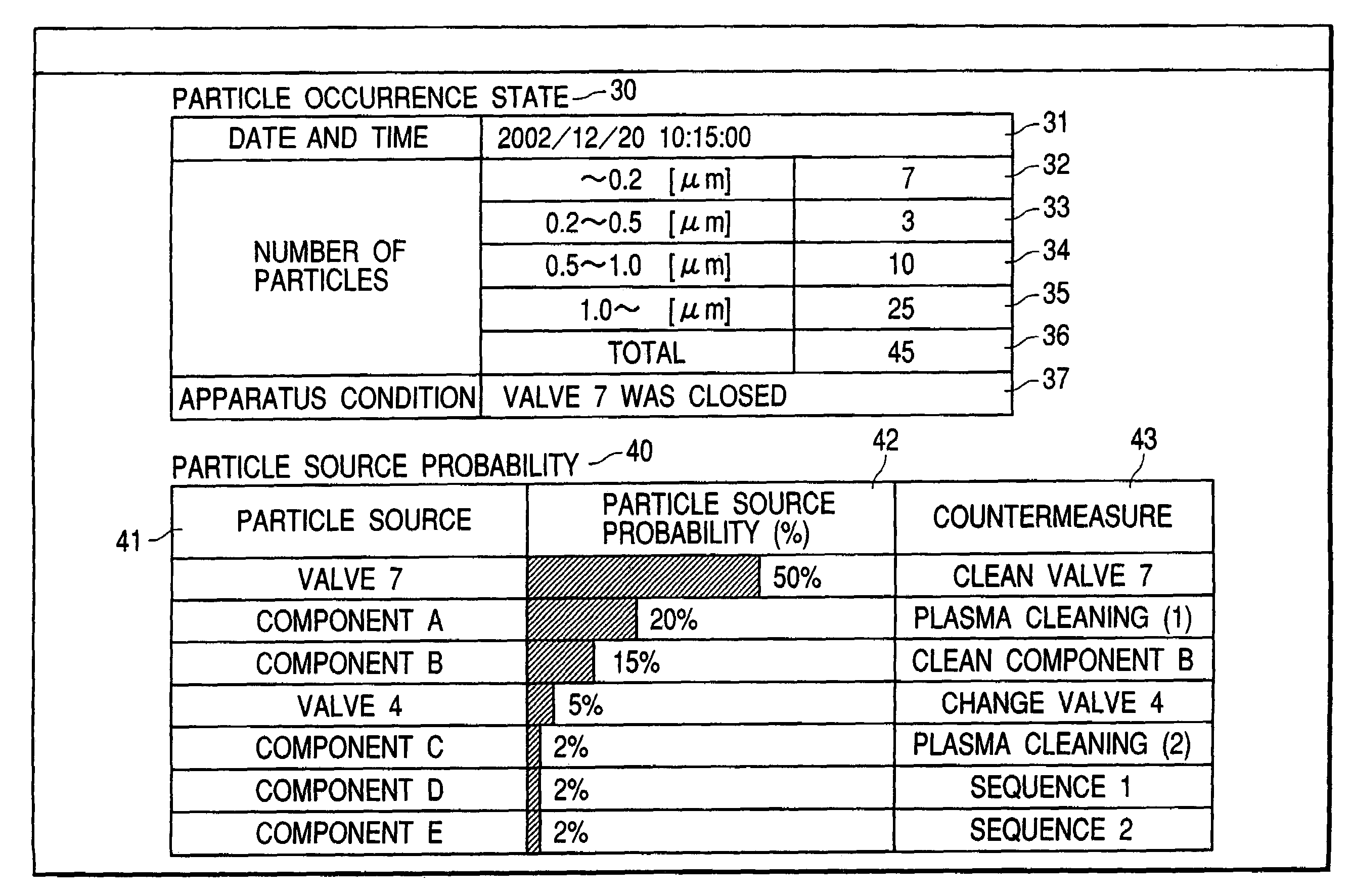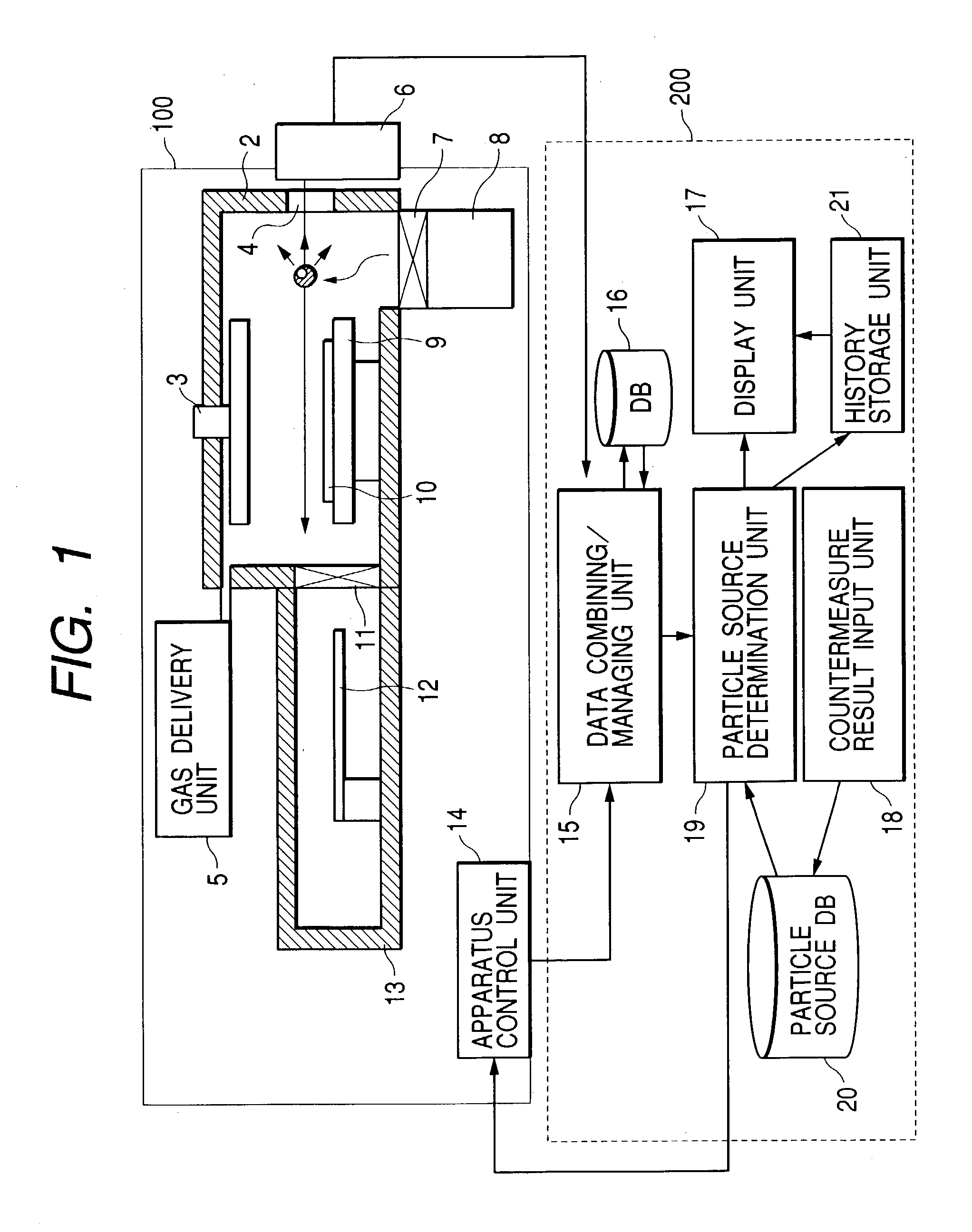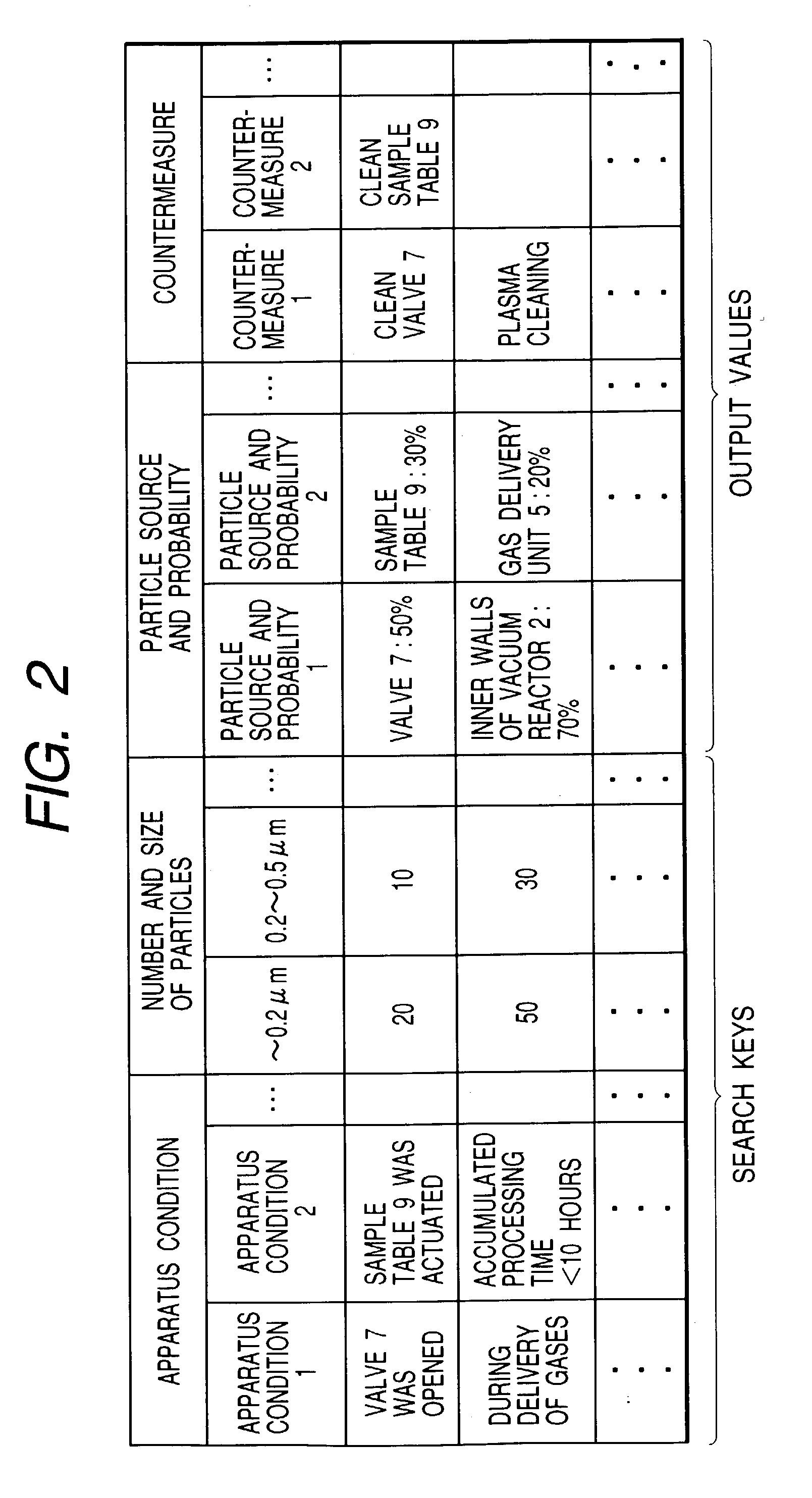Particle control device and particle control method for vacuum processing apparatus
a vacuum processing and particle control technology, applied in vacuum evaporation coatings, chemical vapor deposition coatings, coatings, etc., can solve the problems of reducing the yield or reliability of semiconductor products, unable to detect particles during the processing of product wafers, and large number of defective wafers will be produced
- Summary
- Abstract
- Description
- Claims
- Application Information
AI Technical Summary
Benefits of technology
Problems solved by technology
Method used
Image
Examples
first embodiment
[0024]FIG. 1 is a diagram illustrating a particle control device according to the present invention. As shown in FIG. 1, a vacuum processing apparatus 100, such as a plasma etching apparatus, includes a vacuum reactor 2 and a plasma generation unit 3 having an antenna electrode and a coaxial line for supplying high frequency power to the antenna electrode (not shown).
[0025]A particle measurement window 4 is provided on a wall of the vacuum reactor 2. A gas delivery unit 5 supplies processing gases to the vacuum reactor 2. A particle monitor 6 emits laser light to the interior of the vacuum reactor 2 through the window 4 and detects laser light which is scattered by the particles in the vacuum reactor 2, to thereby detect the size (particle size) of floating particles and the number of particles present in the vacuum reactor 2. The detected values are outputted as particle data.
[0026]A gas exhaust unit 8 exhausts the gases from the vacuum reactor 2 to maintain a gas pressure in the v...
third embodiment
[0046]FIG. 7 is a diagram illustrating the present invention. In FIG. 7, vacuum processing apparatuses 100a, 100b and 100c are controlled by a data managing unit 200. In the present embodiment, the data managing unit 200 is a portable unit. In actual use, the operator carries the data managing unit 200 to a location where the vacuum processing apparatuses 100a, 100b and 100c, which should undergo particle control, are installed, and the operator attaches it selectively to any one of the vacuum processing apparatuses 100a, 100b and 100c, as shown in dashed line in FIG. 7.
[0047]In this case, too, the data managing unit 200 searches a particle source database 20, using a search key that is generated on the basis of the received combined data, to provide a search result. The particle source database 20 may preferably be provided with a section for each of the vacuum processing apparatuses 100a, 100b and 100c, so that the search and search result for each of the vacuum processing apparat...
PUM
| Property | Measurement | Unit |
|---|---|---|
| particle size | aaaaa | aaaaa |
| particle size | aaaaa | aaaaa |
| particle size | aaaaa | aaaaa |
Abstract
Description
Claims
Application Information
 Login to View More
Login to View More - R&D
- Intellectual Property
- Life Sciences
- Materials
- Tech Scout
- Unparalleled Data Quality
- Higher Quality Content
- 60% Fewer Hallucinations
Browse by: Latest US Patents, China's latest patents, Technical Efficacy Thesaurus, Application Domain, Technology Topic, Popular Technical Reports.
© 2025 PatSnap. All rights reserved.Legal|Privacy policy|Modern Slavery Act Transparency Statement|Sitemap|About US| Contact US: help@patsnap.com



